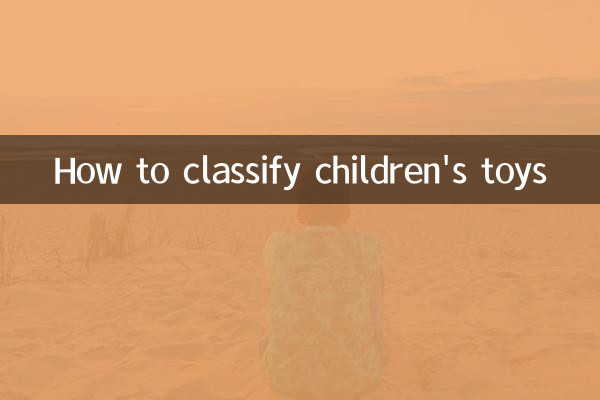How to classify children's toys
Children’s toys are an indispensable part of the child’s growth process. They not only bring joy, but also promote children’s intellectual, emotional and physical development. As the market continues to enrich, there are more and more types of toys. So, how should children's toys be classified? This article will classify toys from multiple dimensions and attach popular toy topics on the entire network for nearly 10 days to help parents better choose toys that suit their children.
1. Classification by age

Children of different age groups have different needs and abilities for toys, so toys can be classified according to the appropriate age:
| Age stage | Suitable for toy types | Give an example |
|---|---|---|
| 0-6 months | Sensory stimulation | Ring bells, soft glue toys, black and white cards |
| 6-12 months | Grab and explore categories | Building blocks, cloth books, music toys |
| 1-3 years old | Action and Cognitive | Puzzles, push and pull toys, simple musical instruments |
| 3-6 years old | Creative and social categories | Lego, role-playing toys, drawing boards |
| Over 6 years old | Complex puzzles | Science experiment set, programming robot, strategy board game |
2. Classify by function
Toys have various functions and can be classified according to their main functions:
| Functional Category | Features | Give an example |
|---|---|---|
| Puzzle | Promote thinking and logic skills | Puzzles, Rubik's Cubes, Mathematics Teaching Tools |
| Sports | Exercise coordination | Scooters, skipping ropes, balls |
| Creative category | Inspire imagination and artistic talent | Colorful clay, painting tools, handmade suits |
| Electronics | Combining technology and interaction | Intelligent robots, electronic pianos, VR toys |
| Social | Cultivate cooperation and communication skills | Board games, role-playing suits, team toys |
3. Classification by material
The material of toys directly affects their safety and durability. Common materials are classified as follows:
| Material Category | Features | Give an example |
|---|---|---|
| plastic | Lightweight, rich in color | Building blocks, dolls, models |
| Wooden | Environmentally friendly and durable | Wooden puzzles, train tracks, tool tables |
| Cloth | Soft and safe | Cloth books, plush toys, soothing towels |
| Metal | Strong and suitable for older children | Model car, scientific experimental equipment |
| Mixed Materials | Combined with various material characteristics | Electronic toys, composite assembled toys |
4. Popular toy topics on the entire network in the past 10 days
The following are the hot topics of children's toys that have been discussed on the Internet recently:
| Hot Topics | Main content | Popularity index |
|---|---|---|
| STEM toy craze | Science, technology, engineering, and mathematics toys become new favorites for parents | ★★★★★ |
| Environmentally friendly toy trends | Wooden and biodegradable toys have attracted more attention | ★★★★☆ |
| Smart interactive toys | Sales of AI voice interaction and programming robots rise | ★★★★☆ |
| Nostalgic toys return | Retro gyros, jumping frogs and other classic toys are popular again | ★★★☆☆ |
| Toy safety issues | Parents have higher safety requirements for toy materials and designs | ★★★★★ |
5. How to choose the right toy?
When choosing toys, parents should consider their children's age, interests and development needs in a comprehensive way. Here are some suggestions:
1.Safety priority: Ensure that the toy material is non-toxic and has no sharp edges and corners, and complies with national quality inspection standards.
2.Age-appropriate: Choose toys suitable for the current age of the child and avoid being too simple or complicated.
3.Interest-oriented: Observe children’s interests and hobbies and choose toys that can inspire them to actively explore.
4.Educational Value: Priority is given to toys that are both entertaining and educational, such as educational or STEM toys.
5.Social attributes: Appropriately choose toys that can promote children's interaction with their peers and cultivate cooperation ability.
Through scientific classification and selection, toys can not only bring happiness to children, but also become good partners on their growth path.

check the details

check the details